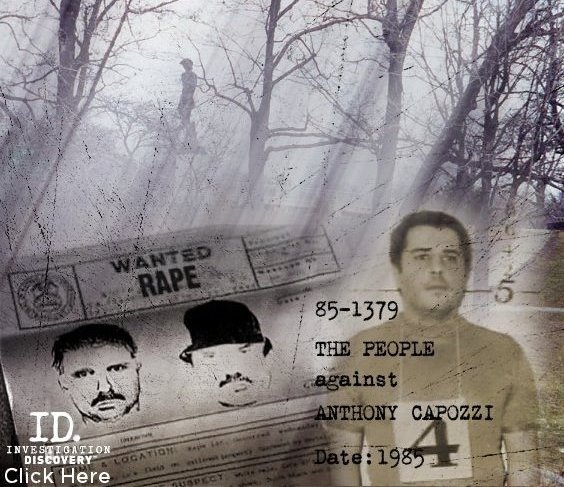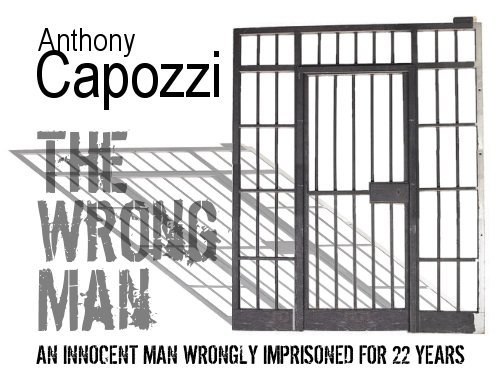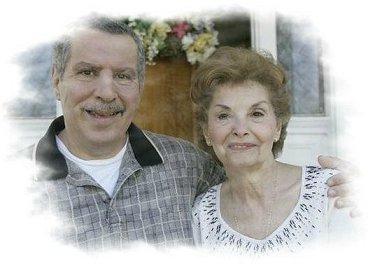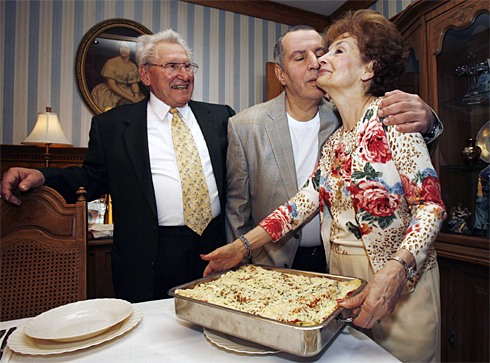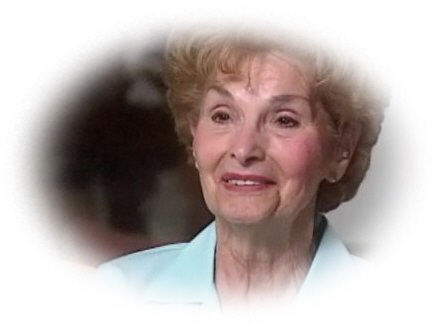
|
Investigation Discovery Videos Click Here |
|
|
|
Son's arrest leads mother on a 22-year journey of faith |
|
BUFFALO (AP) — Mary
Capozzi looks for a moment at the white kitchen door as if she is
seeing once more the policemen leaving through it, with her son,
Anthony.
Police had been to the house a day or two before looking for a tank top, shorts, a ski mask, a gun — the tools of a rapist who was striking victims in the city's Delaware Park.
"Go ahead and look anyplace you want," Mary Capozzi had told them. Not only was her Anthony not a rapist, he wouldn't be caught dead in the gym clothes police described.
Not Anthony, with his crisp, white shirts and trousers pressed so particularly that she had to take extra care so the crease didn't fall too sharply on his shoes.
A gun?
"My son was afraid of a needle this big," the slight, feisty mother of five said, holding her thumb and index finger two inches apart. "He would never own a gun."
But now, two officers
were here in her kitchen, leading away 29-year-old Anthony as she
and her husband, Albert, watched, panic-stricken. It was her middle
daughter, Kathy's, birthday:
"Don't worry, Mom," Anthony told her. "I'll be back."
She believed him. And waited — for technology not yet imagined, for people whose names she did not yet know — for the next 22 years.
On
Capozzi was sentenced to 11 2/3 to 35 years in prison on two counts of first-degree rape, two counts of sexual abuse and two counts of sodomy.
"Please don't take
comfort in the fact that Anthony Capozzi has been convicted of these
two crimes, because he didn't do them," Capozzi's attorney,
Thomas D'Agostino, told women through news cameras that converged
after the verdict. "Don't feel that you can go running without
company in
Hope that the legal system would save Capozzi was quickly fading.
His mother had already put her faith in something bigger.
Every day after her son's arrest, Mary Capozzi prayed inside Holy Angels Church, a 150-year-old sanctuary with two soaring steeples a block from her home. Seven days a week, there were rosaries and novenas to Our Lady of Hope, prayers for her son's freedom and for peace for her, for her Anthony.
"You have to have faith," Mary Capozzi, now 75, says. "You've got to have something to hold on to."
She would pass that faith on to Anthony during the heartbreaking prison visits that went on year after year.
"Dad, what am I still doing here? I didn't do anything. I didn't hurt anyone. I wouldn't do anything to hurt a lady," the son would say to his father, who was 59 when the visits started, 81 and white-haired now.
It was his wife's faith in her son that strengthened his own when doubt would creep into his thoughts, Albert Capozzi says. His son had shown signs of mental illness, after all, and three victims seemed so sure it was him.
"But my wife said no. My son never did that," Albert Capozzi said. "She made a better person out of me because of that."
Anthony Capozzi spent
15 years at the
His mother's prayers continued through them all, and through other family trials: two daughters' battles with breast cancer, another's with multiple sclerosis.
"We told Anthony, we're a big family and we've got to stay together," Mary Capozzi said, "because you stay together, you're strong. Pull apart, you break and you're nothing."
Every two years beginning in 1997, Anthony Capozzi appeared before a three-member parole board, but his family learned quickly not to get their hopes up.
To be considered for release, Capozzi would have to complete mandatory sex offender programming — something that would have required him to admit to the crimes and show remorse.
"Ant," his younger brother, Albert Jr., would say, "just say that you did it because if you say that you did it, you're going to get out."
"I can't," came the reply. "I didn't do it."
Five times, parole was denied.
A sixth parole hearing
was scheduled for
D'Agostino and a second lawyer, a parole expert named Norman Effman, had built what they believed was a strong case for Capozzi's release. It was based on the January arrest of a man whose DNA linked him to three murders and at least eight rapes from 1981 to 2006.
Two of the so-called "Bike Path Rapist's" crimes, in 1981 and 1986, occurred in the same park where Capozzi was accused of attacking women, and the description of the crimes was similar. In all the rapes, victims said they were surprised from behind or as the rapist ran by them, and the assailant told victims to wait 10 or 20 minutes before fleeing.
Snapshots from the 1970s and '80s of Capozzi and newly arrested Altemio Sanchez show similar dark hair and mustaches. The men are a year apart in age.
The parallels were enough to convince a half dozen detectives working the Bike Path case that Sanchez — a married factory worker who raised two sons while Capozzi was locked away — was responsible for all the park rapes.
"We thought we had a reasonable shot at parole," Effman said. (Sanchez has pleaded not guilty to three murders. He cannot be charged with the rapes because the statute of limitations has passed.)
With the hearing approaching, there was a stunning find.
DNA evidence from
Capozzi's alleged crimes — evidence no one knew existed — was
located at
No one has been able to explain why law enforcement did not know of the hospital's large catalog of glass slides that had been part of victim rape kits dating from 1973. The cache came to light only after a police officer working other unsolved rapes, on a hunch, asked the hospital whether such evidence might exist.
"The DNA was not of Anthony Capozzi," Erie County District Attorney Frank Clark announced five days before the hearing. "It was Altemio Sanchez."
"I don't want anybody to take this away from me," Mary Capozzi said that day, as she reveled in the news with her family at a daughter's hair salon.
The next day, Mary Capozzi returned to Holy Angels church to set flowers before the Blessed Mother. "Just a little token for her for what she's done for me and my family and for my dear, dear son."
Within days, Erie County Judge Shirley Troutman threw out Capozzi's conviction and ordered him freed. Twenty-one years and 201 days after he was first imprisoned. |
|
|
||
|
The Capozzis
were reunited at the
On Easter,
parishioners applauded the family at
"I'm not angry at all," said Capozzi, now 50, his dark hair close cropped and graying. "I'm glad to be home ... It's all over now."
For his mother, there is sadness over time lost and memories of the empty ache of absence at so many holidays and birthdays.
But overriding are happy vows to make up for all of that — and then some.
Because his schizophrenia must be treated, Capozzi will likely live in an assisted living setting.
Throughout their neighborhood, blue vinyl ribbons rustle on trees and telephone polls. Neighbors tied them there as a welcome home for a returning son, and as thanks to the heavens for a mother's answered prayers.
Copyright
2007 The Associated Press. All rights reserved. This material may
not be published, broadcast, rewritten or redis |
||
|
|
||
|
||
| Newfound
evidence that exonerates Capozzi stored at ECMC all along Testing
Available Since ’90s DNA from ’83, ’84 rapesmatches Sanchez,
DA says By Maki Becker BUFFALO NEWS STAFF REPORTER 03/29/07 |
||
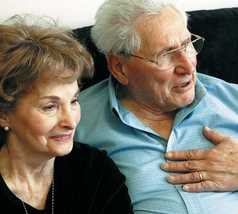 |
“Have you ever felt pure joy in your heart?” Albert Capozzi said Wednesday, after he and his wife, Mary, learned their son may soon be free. | |
| An
innocent man who has been in prison for almost 22 years after being
wrongly convicted of two “At last, he’s been vindicated,” said Thomas C. D’Agostino, the defense attorney who represented Anthony J. Capozzi during his trial and has been fighting for his release ever since. “He’s always said he didn’t do it,” D’Agostino said. Erie County District Attorney Frank J. Clark made the stunning announcement during a packed news conference Wednesday morning that not only did the newly found DNA evidence prove that Capozzi was innocent — but that it matched the DNA of the alleged Bike Path Killer.
“The
DNA was not of Anthony Capozzi,” D’Agostino
also is filing a motion to have Capozzi’s conviction vacated, and
Capozzi could be let out of prison next week, or by the end of next month at the latest. |
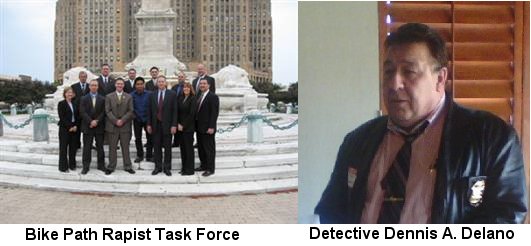 |
| The
path to Capozzi’s vindication began as detectives on the Bike Path
Rapist Task Force, who helped catch Sanchez, came across Capozzi’s
case as they pored over paperwork from old rape investigations. The case caught their attention because the rapes Capozzi was accused of committing occurred in The investigators already had conclusively linked Sanchez to two other rapes in the park: in 1981 and 1986. Detectives Dennis A. Delano and Lissa M. Redmond continued to look into the Capozzi case, even after Sanchez’s arrest, and began raising questions about whether the wrong man had gone to prison. Simultaneously, D’Agostino was working with But time and again, the investigators, D’Agostino and Clark kept running into a wall — the shared belief that there was no physical evidence that could point to Capozzi’s innocence or guilt. Capozzi, who resembled Sanchez at the time of the The best anyone hoped for Capozzi was for the Parole Board to take into consideration the developments in the bike path investigation when Capozzi came up for parole next month. But that all changed on one snowy day shortly after Sanchez’s arrest as Evans Police Detective Lt. Samuel V. De- John drove in the Southtowns with Amherst Detective Eddie Monin. While not on the official task force, they, too, were investigating unsolved rapes with possible connections to the Bike Path Killer, including one in 1977 in Evans. DeJohn recalled lamenting to Monin that his department had thrown out physical evidence from that investigation — leaving no chance of testing for traces of DNA that could connect it to the Bike Path Killer. Monin had a suggestion: “Did you ever think that maybe ECMC retained some of that stuff? You never know.” DeJohn called the hospital and learned, much to his surprise, that the hospital did, in fact, have a huge catalog of glass slides, taken as part of standard rape kits performed on victims, that dated back from 1973 and went up to 2002. The hospital did not have a slide for the 1977 victim, DeJohn said. But DeJohn said he decided to e-mail Deputy District Attorney Frank A. Sedita III to let him know — just in case he didn’t — that these slides existed. It appears that no one in local law enforcement had any idea that these slides existed, although there had been rumors about the possibility of old evidence lingering at ECMC and other hospitals. No one got any results, according to “Then, it was like ‘open sesame,’ ” ECMC attorney Anthony J. Colucci III said he is not aware of any law enforcement agencies having asked for slides until the hospital was sent a subpoena via e-mail March 16. He also said he does not know of any other subpoenas for the slides or any other attempts by law enforcement officers or lawyers to obtain the evidence. The March 16 subpoena included a long list of slides and other possible physical evidence connected with the investigations of attacks on several rape victims, including the women involved in Capozzi’s case. The hospital was ordered to produce the evidence by March 20, Colucci said. “We were digging around like crazy,” he said. “People came in over the weekend, even though they didn’t have to.” The slides from the victims of the rapes for which Capozzi was convicted, along with those of other victims that police were interested in having analyzed, were submitted March 20. D’Agostino said Capozzi and his family are not ready yet to consider whether they might pursue any kind of civil action against the county or the hospital for his wrongful incarceration. “I have no doubt that we will be deluged,” he said. Woytash, too, said he does not understand why there was so little information available about the slides. “All I can say is that when I was asked — and that was just a couple of weeks ago — that’s when we said, ‘Oh, yeah, we’ll look for so-and-so’s slide.’ ” Woytash, who has been at ECMC since 1999, said he cannot recall ever being asked to find the slides for investigations. He said there might have been some confusion because rape kits are now handled exclusively by the countyrun Central Police Services forensic lab. “I don’t think its anyone’s fault,” he said of the lack of communication over the slides, but he said he is ecstatic to help exonerate an innocent man. “Unfortunately, in my line of work, you see every sad case that’s possible,” he said. “This is one of the times when you really make a difference.” mbecker@buffnews.com |
|
|
|
Her son freed, Mary Capozzi dies in peace |
| By Patrick Lakamp Buffalo News Staff ReporterOctober
26, 2009
Mary Capozzi, who endured 22 years of sorrow for her wrongly imprisoned son, died in peace Sunday, her prayers answered.
Mrs. Capozzi, 78, died from congestive heart failure in Buffalo General Hospital.
Her unwavering faith in God and in the innocence of her son Anthony Capozzi inspired many in the community for years. But her story won the hearts of a nation when he was exonerated in 2007 of the rapes that put him in prison for more than two decades.
"She felt her prayers over 22 years were answered," said her son, Albert Capozzi Jr.
"My mother died in peace not only because my brother is home but from her strong belief in the Lord," added her daughter, Sharyn Miller.
A memorial Mass will be offered 10 a.m. Wednesday in Holy Angels Catholic Church on Porter Avenue.
Mrs. Capozzi was a familiar face inside the West Side church.
Seven days a week, since her son was locked up, she went faithfully to Holy Angels. She went Tuesday through Friday mornings; at 4 p.m. Saturday; Sunday mornings; and Monday evenings.
Her prayer: "Please, God, make my son free, if it's your will. Give us peace, all of us, but most of all, my son, Anthony."
On a March night in 2007, while sitting in the kitchen of daughter Pamela Guenther's home in East Amherst, Mrs. Capozzi learned that her prayers had been answered.
"Thank you, God, for what you've done for me," she prayed that night.
Through all the years of his imprisonment, "she never gave up on her faith," her son Albert said Sunday. "Her faith got stronger."
After learning that Anthony had been exonerated, the Capozzi family singled out then-Buffalo Police Detective Dennis A. Delano, who had publicly professed his belief in Capozzi's innocence.
"I've never even talked to Dennis," Mrs. Capozzi said at the time. "But he took on a cause where he put his job on the line, and we didn't even know him."
Delano visited Mrs. Capozzi on Saturday, her family said.
"Dennis came to see her in the hospital," Albert Capozzi Jr. said. "She opened her eyes and looked at him, and she smiled at him."
Mrs. Capozzi got sick about two years ago. In recent months she became home-bound, and she regretted not being able to attend church every day and volunteering for church activities.
"We were lucky in that we had so much time to spend with her," said Miller, her daughter. "We could show my mom how much we loved her."
Every day, one or more of Mrs. Capozzi's children would come to her Jersey Street home to help with her medical needs and spend time with her.
Anthony, who has schizophrenia and has lived in an assisted living facility since he was freed, would come home on Fridays and Sundays -- without staying overnight.
"He was able to spend some quality time with my mom," Miller said.
Survivors of Mrs. Capozzi include her husband, Albert J. Sr.; sons, Anthony J. and Albert J. Jr.; and three daughters, Sharyn Miller, Kathleen Jeras and Pamela Guenther.
Mrs. Capozzi embraced the community because of the outpouring of affection and support for our family, her children said.
Her children recognize the community's interest in their mother.
"It seems like we shared her with a lot of other people," Miller said.
Her experience helped others renew their own faith, said her son Albert.
Mrs. Capozzi talked about her public profile in May when she was asked how it felt to be one of Western New York's favorite mothers for a Mother's Day story published in The Buffalo News.
"Very nice," she replied. "I like people. They make me happy. "I go to church, I have more people coming up to me and kissing me," she said. "Now church is over, and a few more come over. They don't have to come up to me, but that's beautiful. My husband always says, "Mary, a lot of people love you.'" |
|
|
|
Senator
Volker Announces Passage of "Anthony’s Law" By
Dale M. Volker Created
03/26/2009 - 7:44pm (ALBANY,
NY) Senator Dale M. Volker (R-C-I, Depew) announced today that he
has passed legislation that would give docket priority to claims for
those who have been unjustly convicted and imprisoned.
"Anthony’s Law" is named after Anthony Capozzi, who was
convicted over two decades ago of a crime he did not commit. Due to
an administrative error, DNA evidence which would have exonerated
him was never examined until recently. Despite the fact that he did
not commit this crime he has spent more than half of his life behind
bars.
"Anthony
Capozzi is an innocent man who by no fault of his own, was convicted
and imprisoned for over 20 years," said Senator Dale M. Volker.
"Justice was not served, and this man and his family have
already waited too long for the criminal justice system to correct
this wrong. In passing "Anthony’s Law" Mr. Capozzi will
be able to quickly have his case considered by the Court of Claims
in an expedited manner. This is the right thing to do and will give
Mr. Capozzi the opportunity to clear his name and seek damages to an
injustice that began over 20 years ago."
It has been established that it can take between 1 1/2 years and four years for a case to be considered and resolved by the Court of Claims. A wait of 2 years for a person unjustly convicted is inexcusable - four years would be an even greater travesty. Any claim made against the State for their unjust imprisonment should be given the highest priority. The preponderance should be that the State should take proper action to ensure that any claims placed against it as a result of their false imprisonment should be resolved in short order.
This
way people like Anthony Capozzi - who have been unfairly treated by
our system of justice - can start to rebuild their lives. The speed
with which their case is taken up should be proportionate to the
harm done to them by our system of justice. |
|
|
|
The
Wrongful Conviction of Anthony Capozzi: The Hindsight of DNA
Technology by
William J. Morgan, Jr.©
The
modus operandi of the killer was familiar to detectives from cases
of serial rapes and murders 1986-1994, which included nine rapes and
two murders. The killer preferred white females, stalked parks,
secluded areas, and bike paths in the Western New York area,
attacked the victim from behind, and left a signature of double
ligature marks from a chain on the necks of victims (Becker, 2006;
Warner³, 2007). The DNA and modus operandi matched cases from as
far back as 1983 where a 13-year-old girl was raped as she rode
along railroad tracks on her way to school; the incident occurred
long before DNA evidence was available and where the rapist-killer
left DNA at 8 of the rapes/murders (Warner & Becker, 2006). The
other women killed were Christine Mazur and Linda Yalem; the latter
was killed on September 29, 1990 as anniversary dates are important
to serial killers. |
|
|
|
|
|
Bike Path Rapist: A Cop's Firsthand Account of
Catching the Killer Who Terrorized a Community
By Jeff Schober and Dennis Delano |
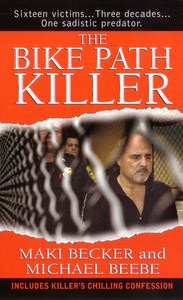 |
By Michael Beebe and Maki Becker |
Buffalo Police Department, Police Badge, Police Badges, Crime Stories, Police Vehicles, Police Cars, K-9, URT, Underwater Recovery, Police Band, Drill Team, City of Buffalo, Police Officers Memorial, Mounted, Police Motorcycle, Buffalo NY, Mike Kaska, Buffalo Police, SWAT, S.W.A.T , Buffalo Police, Buffalo Police Then and Now
